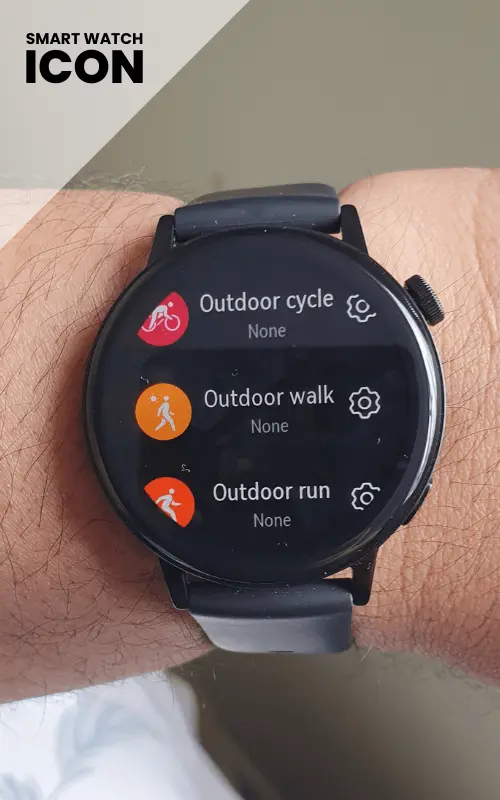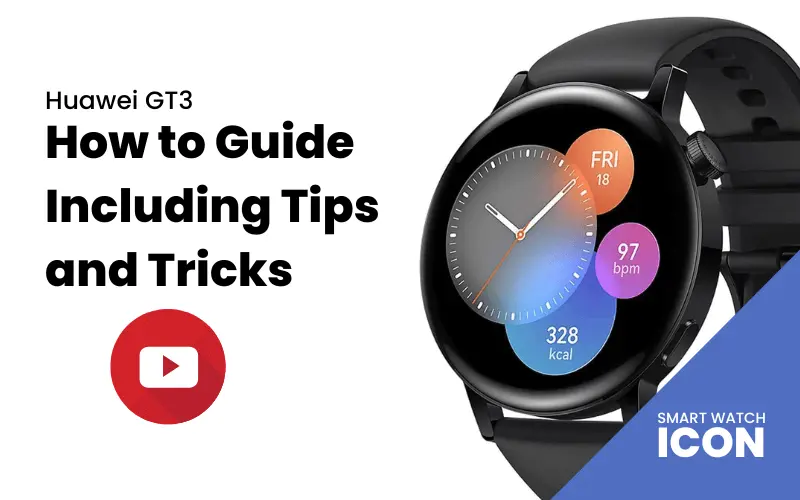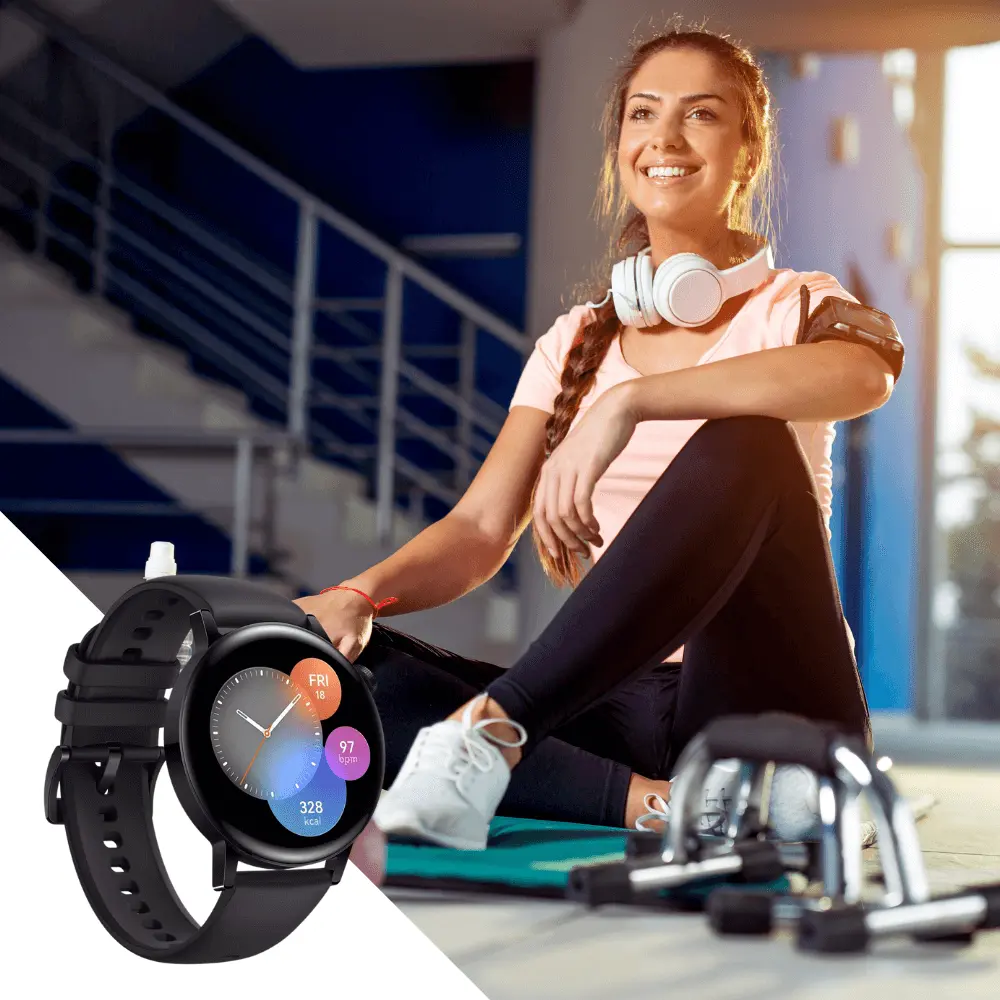Huawei GT 3 : Battery Life Is Not What It Seems
So I have owned the Huawei GT 3 now for 3 weeks and one of the things that intrigued me was the battery life. There is a significant difference between the 42mm version versus the 46mm model. According to the Huawei Lab tests the 46mm model can provide up to 14 days or up to 8 days heavy usage. The 42mm model can provide up to 7 days or 4 days heavy usage.
At first I was a little disappointed, because I always used the battery performance mode when I went out hiking, outdoor walking or running. On the plus side, to recharge your watch is very impressive. Using the 42mm Huawei GT 3 I get 3 days battery life. I have recorded my usage and I am happy to share this to you so you can get the best outcome.
In this article I will share with you my experience when using the Huawei GT 3, including my typical usage. This would be the focus so you can compare your activity and see if you will get the same result as me. Also I have done some tests on the recharge rates. I have picked some random watches so this would be interesting to see.
Let’s Look At The Typical Usage That Huawei Labs Predicts.
Now this is an interesting one to say the least. I don’t know how this information is gathered, but in my opinion it seems to be way off the mark. When someone is going to purchase a smartwatch to improve their fitness, they are more than likely to use the exercise modes frequently. Anyway without further adieu let’s see how Huawei Labs predicts a very normal usage.
- 30 minutes of Bluetooth calling every week
- 30 minutes of music playing every week
- All day heart rate tracking
- Huawei TRUsleep enabled
- 90 minutes of workouts
- Message notifications enabled (50 texts, 6 calls and 3 alarms)
- AOD, screen turned on 200 times a day.
According to Huawei Labs, the above bullet points will enable you to get up to 8 days battery life. The Bluetooth connectivity doesn’t use that much battery life, so you can disregard bullet points 1 and 2 however the remaining bullet points are massive power drainers. Which is why Huawei Labs have listed it this way.
So when you look at this list does this align with your typical usage? If yes then you will definitely get close to 8 days battery life. The one thing that doesn’t seem right is the 90 minutes of workouts for the week. Depending on your fitness level, 90 minutes per week may be intense versus a person who is very fit can quadruple that number.
Let’s Look At The Heavy Usage That Huawei Labs Predicts.
The list below is Huawei Labs heavy usage and the only real change is the number of workout minutes and the AOD (always on display) in total 30 minutes. The list is as follows
- 30 minutes of Bluetooth calling every week
- 30 minutes of music playing every week
- All day heart rate tracking
- Huawei TRUsleep enabled
- 180 minutes of workouts
- Message notifications enabled (50 texts, 6 calls and 3 alarms)
- AOD, screen turned on 30 minutes per day.
The real focus is on the workout minutes. 180 minutes for the week may seem a little low for a person who is very active. So does this align with your typical usage?, If yes then you can achieve at least 4 days battery life
Here is my typical usage for 2-3 days battery life
My typical usage is different to how Huawei LAB’s predict a user. I am a person who likes to stay active every day and enjoy hikes on the weekend. Here is a list of my typical usage
- All day heart rate tracking
- Huawei TRUsleep enabled
- 60 minutes music playback
- 150 minutes strength workout mode
- 100 minutes GPS tracking (running, walking)
- AOD around 200 screen activations
I’m not one who likes to look at messages and stuff you won’t see in my typical usage. However when you see my typical usage would this align with yours? After looking at my typical usage, the battery drainers are really the workout modes and GPS tracking.
I like to do weight training in the morning, and I like to use Huawei’s running course program in the evening after work, hence the GPS tracking. I do have Workout broadcast turned on as well when I am doing the running course.
If you are not familiar with workout broadcasts when using the running courses, it’s like having a coach instructing you to run when required, and walk when required. I have the volume up high so I can hear and follow the running program. I know for sure this would have an impact on the battery life for sure.
I consider myself as a person with an average fitness level, but I’m sure there are plenty of high level fitness people out there who would have bigger activity minutes. Bigger workout minutes and GPS tracking will result in faster battery drain.
Fast Charge is Very Impressive
I have tested the Huawei Band 7, Huawei Watch Fit 2, and now the Huawei GT 3. They all have one thing in common. Very fast recharge time, which I think goes hand in hand with the fast battery drain after training.
I have also measured the recharge rate and compared it to other random fitness trackers and smart watches I have lying around. I thought this test would be interesting so it gives you an idea how long it will take to charge your watch.
The list below will tell you how long it would take to recharge 1% battery life in minutes and seconds. That way you can calculate the battery life lost by the recharge rate.
- Huawei GT 3 rate is 1 minute 10 seconds to recharge 1% battery
- Huawei Band 7 is 21 seconds to recharge 1% battery
- Huawei Watch Fit 2 is 1 minute 10 seconds to recharge 1% battery
- Fitbit Charge 5 is 2 minutes to recharge 1% battery
- Samsung Galaxy Watch 4 is 2 minutes 30 seconds to recharge 1% battery
When I conducted the test, I turned the watch’s off. Then I would divide the time taken to charge the watch by the number of energy replenished.
Final Conclusion
The Huawei GT 3 42mm version offers up to 8 days typical and up to 4 days heavy usage. I have found that I can get up to 3 days of typical usage. It’s even less than that if I go out on long hikes on the weekend. The main battery drainer is really the GPS tracking and the heart rate tracking.
I am currently following the running courses by Huawei and after a running session, the battery life drains very fast. This also applies to anyone who does a lot of cycling or hiking too, as GPS tracking is active when using these workout modes. So please be aware of this before you decide to buy.
Also I’m not sure how Huawei LAB gets their information on typical usage and heavy usage. Does it mean that the majority of the population is not very active? Am I a small proportion of people who stays active? If that is the case then maybe Huawei’s data is correct.
Lastly, the fast recharge of the Huawei GT 3 42mm is very good. In comparison to the other competitors it’s pretty good.
Anyway thank you so much for reading and I hope you found this useful. I also have video tutorials on the Huawei GT 3. If you are stuck on anything check out my channel to help you out.



